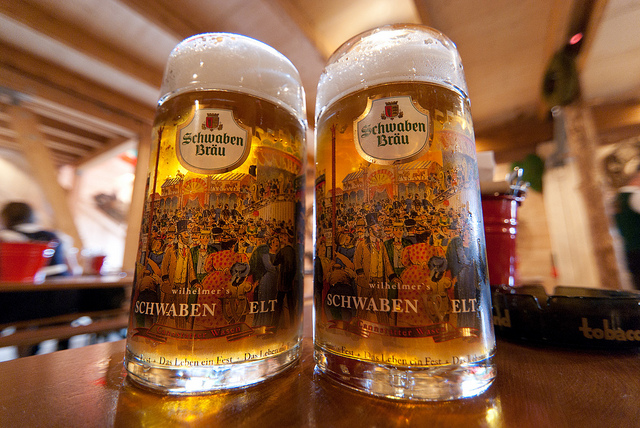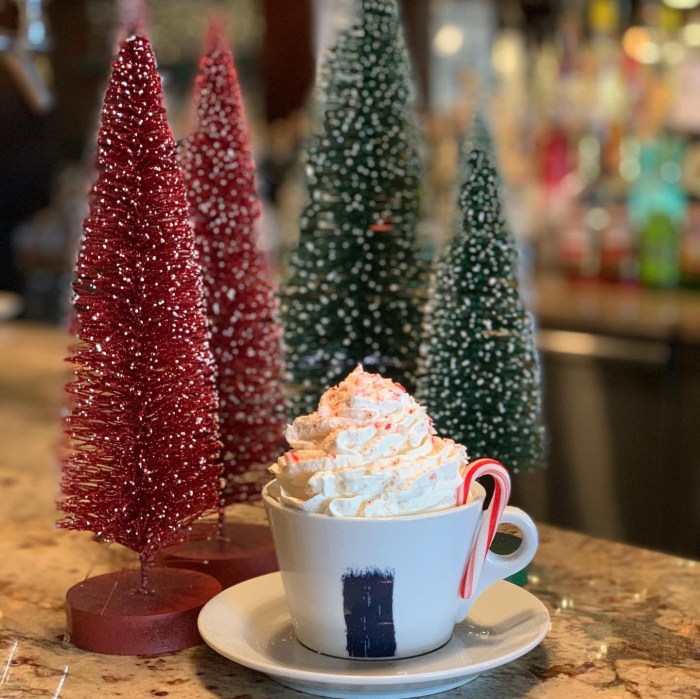Oktoberfest, that annual celebration of German beer, food and music – and short leather pants – is a bit of a misnomer: The start of the annual fall fete is actually in September.
Like many bits of fractured history, drinking was involved.
The name dates back over 200 years to the royal hitching of Bavarian Crown Prince Ludwig and Princess Therese von Sachsen-Hildburghausen. The big day was October 12, 1810.
The newlyweds invited everyone – literally the entire population of Munich – and the partying stretched on for five days on the fields in front of the city gates, which became known as Therese’s fields or the Theresienwiese.
The wedding celebration was such fun that it turned into an annual party. In later years, the festival was lengthened – it’s now to more than two weeks and then moved to start in mid-September to take advantage of better weather and the longer hours of daylight.
So the official start of Munich’s Oktoberfest is now the third Saturday of September. The festival ends on the first weekend in October and today is enjoyed by over 5 million visitors each year.
Beer has been an important part of the Munich Oktoberfest since its founding and in 2016 almost 7 million liters were served. Only beer brewed within the city limits and conforming to the German Beer Purity Law of 1516, the Reinheitsgebot (try pronouncing that after a liter or two!), are designated Oktoberfestbiers. Six breweries – Augustiner, Hacker-Pschorr, Hofbräu, Löwenbräu, Paulaner and Spaten received this designation in 1818 and they continue to supply festivalgoers with the traditional amber lager known as Märzen.
“Traditional Oktoberfestbiers were lagers that were brewed in March, or Märzen in German,” said Matt Buck, general manager of Plattduetsche Park in Franklin Square, Long Island’s premier German restaurant and biergarten. “The beer was fermented slowly over the summer months and developed a reddish color from the rich Munich malts used in the recipe. The beer is meant to be smooth and drinkable to enjoy at a festival, so the abv (alcohol by volume) is typically around 5.7 to 5.8 percent.”
Plattduetsche Park holds some of the biggest German festivals on Long Island, including its annual Ompahfest being held this year on September 17. Ompahfest is always held the day after the Steuben Parade in Manhattan and features music from bands that march in the parade, including six bands this year direct from Germany and Austria. Plenty of Oktoberfestbier will be served with authentic German food.
“Plattduetsche is proud to serve beers from the original Munich breweries and this year will feature Oktoberfestbier from Hacker-Pschorr, which is one of our most popular year-round breweries,” Buck said. “We also have an exclusive partnership with Greenport Harbor Brewing from the North Fork and will launch their Leaf Pile Seasonal Ale at the Ompahfest.”
Several craft breweries on Long Island brew their own version of Oktoberfest beer, including Blue Point Brewing in Patchogue.
“I grew up drinking German beers on Long Island, including at Fadeley’s Pub in Patchogue,” said Mark Burford, co-founder and brewmaster emeritus of Blue Point. “So Oktoberfest was one of the first seasonals we brewed at Blue Point in the early 2000s.
According to Burford, Blue Point has always tried to stay true to the traditional German Märzen style in its Oktoberfest beer.
“There are so many hop-forward beers in the craft beer world, so we didn’t want to do that with this style and use primarily Hallertau Continental-style hops.” Burford added, “Malt is the star in this beer style and we strive for the balance and bready flavor notes we get from using German malts.”
Blue Point Oktoberfest beer will be available in six packs at retailers across Long Island beginning in September and will be one of the featured beers on tap at Oktoberfest celebrations at local beer bars.
As they say in Bavaria, “Oans, zwoa, drei! G’suffa!
Related Story: Long Island Oktoberfest Events 2017





























